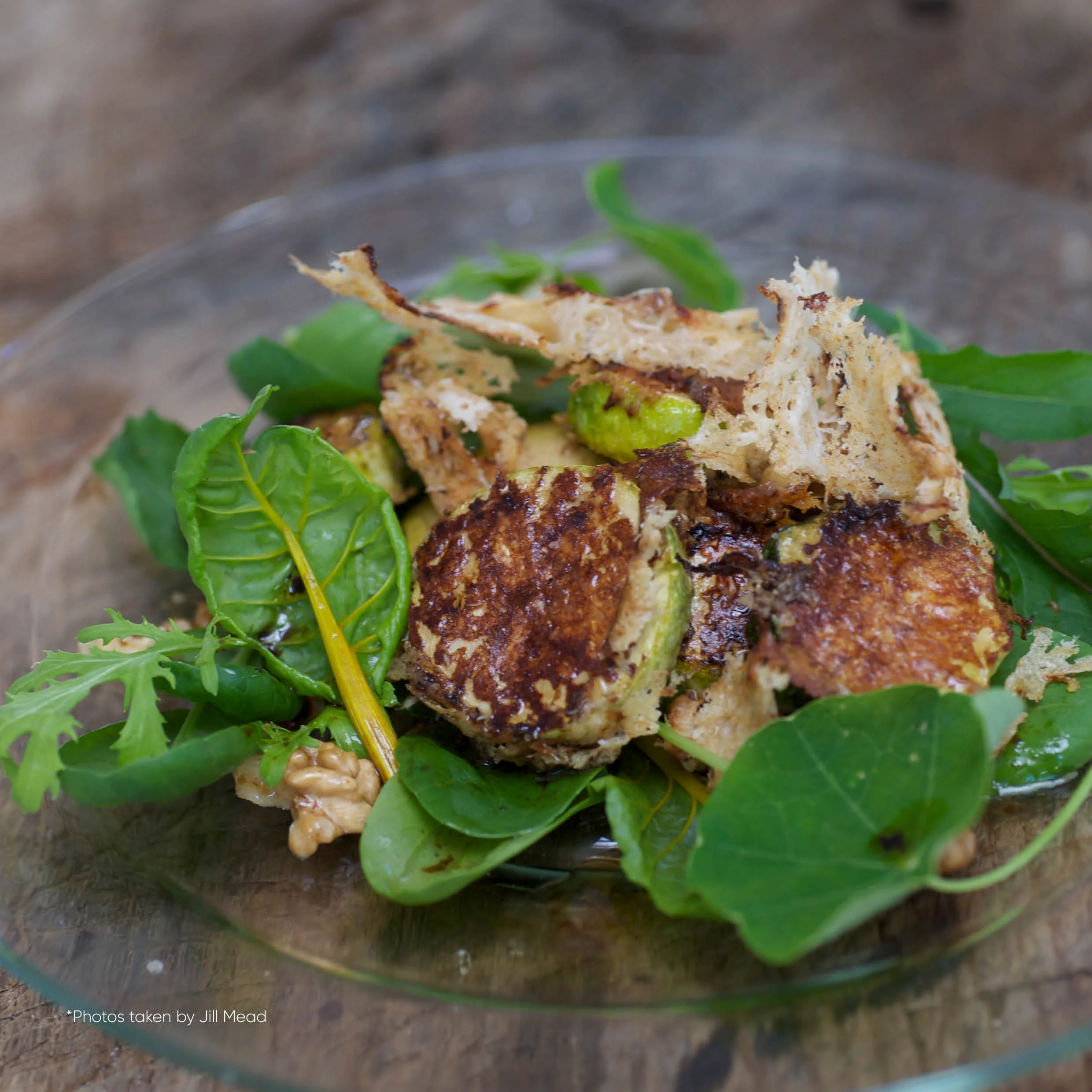Best In Season - July - written by Chef Consultant, Celia Brooks
Courgettes Galore!
Courgettes are an embarrassment of riches in the summer garden, as anyone who grows their own knows. These plants produce such an abundance of juicy fruits that it’s nearly impossible to keep up with eating the harvest. They don’t lend themselves particularly well to preserving, so every possible cooking method is employed during the days of their endless supply. They taste best when harvested young and small, and their blossoms are a lauded delicacy. The plants’ spiky leaves are also incredibly delicious cooked, but that’s a secret treat exclusively for the gardener.
The common dark green courgette is grown to a fairly standard size of about 20cm/ 8 inches for general selling. Anything larger will start to have fully formed seeds and watery flesh and should be avoided. Common they may be, but they are still awesome when sliced lengthways or into rounds, brushed with olive oil and char-grilled on a grill pan or BBQ until branded with black stripes. Now transform them into a 5-star side dish - s & p plus a few drops of really good white wine vinegar, then a final flourish of chopped fresh mint on top. All done in seconds.
Any courgette with an unusual colour like pale green, sunbeam yellow, or sporting sexy stripes is likely to have a more interesting flavour than the dark green ones. Marrows are overgrown courgettes the size of a puppy that do sport stripes, but don’t let that fool you – they are not worth eating in my opinion. Oddly they still appear for sale in the UK for people who like to stuff and bake them. There are far tastier summer squash types for stuffing.
Baby courgettes are really worth seeking out - they’re not much bigger than your thumb and taste surprisingly sweet. These can be treated minimally with brief cooking and light seasoning. Simply cut in half lengthways and fry, or brush with oil and grill or barbecue, then sprinkle with s&p. They are also delicious raw, shaved into nearly transparent-thin slices and drizzled with olive oil and a squeeze of lemon - a classic Italian treatment.
Standard size courgettes lend themselves better than any vegetable to being turned into “courgetti”, long spaghetti-like tendrils produced by a spiralizer or julienne tool. Their long straight shape and easy-to-carve texture make them perfect for this treatment. The easiest way cook courgetti is to simply sprinkle lightly with salt and microwave for just 30 seconds or so, then drain well. Serve hot, smothered with any sauce you’d use for pasta.
Fresh courgette blossoms attached to baby fruits are females; they are not as tasty or robust as the larger male flowers, which grow on the same plant on a stem, so opt for the boys if you are seeking the best blossoms for cooking - they have a pencil-thin stem attached.
When you’re enjoying eating your seasonal courgettes, in whatever form, ponder all the wondrous benefits they are giving your body. They’re extremely rich in lutein and zeaxanthin, two antioxidant chemicals which are hugely beneficial for eye health, concentrated in the skin. Plus they have high levels of multiple anti-inflammatory nutrients, for disease prevention. Bonus!
Warm Courgette Salad with Parmesan Crackling
From New Urban Farmer by Celia Brooks, published by Quadrille
Here the courgette slices get fried in the fat released by the Parmesan, which then turns into a sinful crusty crackling in the pan, clinging to the courgettes. Serve as a main-course salad on a bed of garden leaves and walnuts.
Ingredients (Serves 2)
350g courgettes (about 2 medium), sliced into 1cm / ½ inch discs
1 ½ Tbsp best balsamic vinegar
Mixed salad leaves
50g walnuts, broken into smallish pieces
75g best Parmesan, finely grated
2 Tbsp extra virgin olive oil
Pinch of sea salt
Freshly ground black pepper
Method
Heat your largest non-stick frying pan over a medium heat. Place the courgette discs in a bowl and sprinkle with the balsamic vinegar. Turn to coat.
Prepare serving plates with salad leaves and sprinkle with walnuts.
Place the courgettes in the hot, dry pan (save the remaining vinegar). Do not crowd the pan – do it in two batches if your pan isn’t large enough. Sprinkle half the grated Parmesan over the courgettes, letting some fall to the bottom of the pan. You want a crusty filigree of Parmesan to crisp up on the bottom of the pan, so do not stir.
When the cheese starts to melt and release its fat, watch carefully. When the cheese starts to look golden and crusty, turn over the courgettes and scrape the cheese from the pan – they will stick together and that’s fine – the cheese may stick to your spatula, so use a knife to scrape it off back into the pan. Sprinkle the remaining cheese over the turned courgettes and let it get crusty again, without burning. Turn once more, then remove the pan from the heat.
Beat the olive oil into the remaining vinegar in the bowl with a pinch of salt. Divide the courgettes amongst the salad plates, drizzle with the dressing and grind over plenty of black pepper. Serves 2 as a main course, or 4 as an accompaniment.



